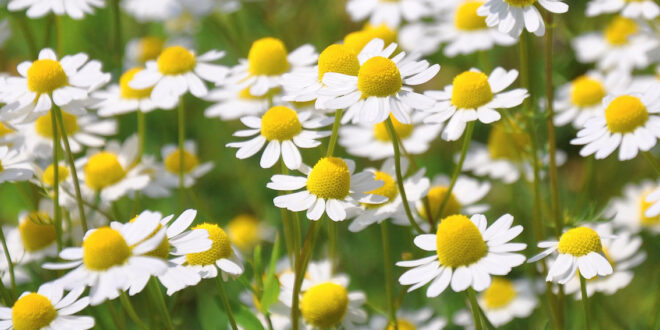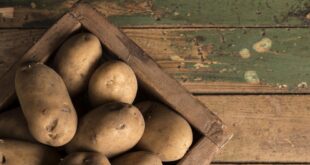Loud, gas-guzzling, and sheer hard slog – that’s your average lawn mower. So why wouldn’t you choose a lawn alternative, especially as you downsize and have less need of the big expanse of green! If this sounds like you, read on to find out ‘where to from here’.
Chamomile lawn
It sounds so romantic, and it can be – as long as you ‘sow-right’ in the beginning. Chamomile is a tough, low-growing plant that doesn’t compete well with weeds, so first rid your ‘lawn’ space of any undesirables. The best organic approach is to lay black plastic over your grassed area during hot weather, and leave it there for 3-4 weeks. The heat will burn off the grass and weeds beneath, leaving a blank canvass for your chamomile seed sowing. This prettily flowering plant is a winner!
Cracks and creepers
A solid mass of pavers isn’t attractive, but add some creeping thyme, prostrate rosemary, chamomile, or marjoram into the equation, and softness soon develops. Leave spaces between your pavers to accommodate these little treasures, and add in some annual creeping colour in the form of lobelia or alyssum. Apart from an occasional water blast to keep the pavers looking pristine, and a couple of minutes weeding every few weeks, your outdoor space is maintenance-free! Tip: Wonder Weeders are brilliant for weeding in tight spaces.
Tough treasures
Un-grassed small spaces can quickly deteriorate when you have a cat or dog on the property, but river pebbles, combined with low-growing natives, are a tough alternative to lawn, and will support native insects at the same time. Be sure to lay weed matting before you put down the pebbles, then plant some of the following through it: Comprosma ‘neglecta’ and ‘ C. Kirkii’, Festuca ‘Coxii’, Fuchsia procumbens.
Make it ‘moss’
Why spend time and effort raking the moss out of your lawn, when you can encourage this handsome plant, along with native look-alikes, to colonise your outdoor space. Mosses attractive in shape and form include Irish Moss (Sagina subulata), Cushion plant (Scleranthus biflorus), and a wide variety of Raoulia.
Roll up, roll up!
Don’t dismiss artificial grass as a solution to low maintenance outdoor space. Times have moved on, and ‘fake grass’ is much more than it once was. When doing your research on the wide variety of styles available, look for under-foot comfort as well as a pleasing appearance, and be sure to enquire about durability. When you add in potted topiary or tubs of colourful annuals, you bring life back into the artificial space so you can enjoy both nature and relaxation! Tip: avoid staining your ‘grass’ by popping drip trays under potted plants.
Dwarf comfrey
Dwarf comfrey is not the same as common comfrey (Symphytum officinale), which can quickly grow to cover your windows. Dwarf comfrey (Symphytum grandiflorum) – also known as ‘ornamental comfrey’ – is a low growing plant sporting pretty pink and blue flowers in spring. It is highly attractive to pollinating insects, including bees. Take the shears to it before it sets seed, then let the leaves lie to fertilize the ground beneath. There will be a period of ‘browning off’ before fresh growth quickly comes through. Note: dwarf comfrey is best for areas where it can be contained (such as inside a paved surround).
Craving clover
Clover is a tough and attractive plant, and it is only a weed when it grows where it’s not wanted. Sow it as a lawn, and it will welcome in insect life and provide you with pretty flowers for months on end. Be sure to rid the ground of weeds before sowing the seed of red and white clover, along with the highly decorative Crimson Clover (Trifolium incarnatum).
With so many stand-ins for lawns, maybe it’s time you thought about ditching the mower!










Join the Discussion
Type out your comment here:
You must be logged in to post a comment.